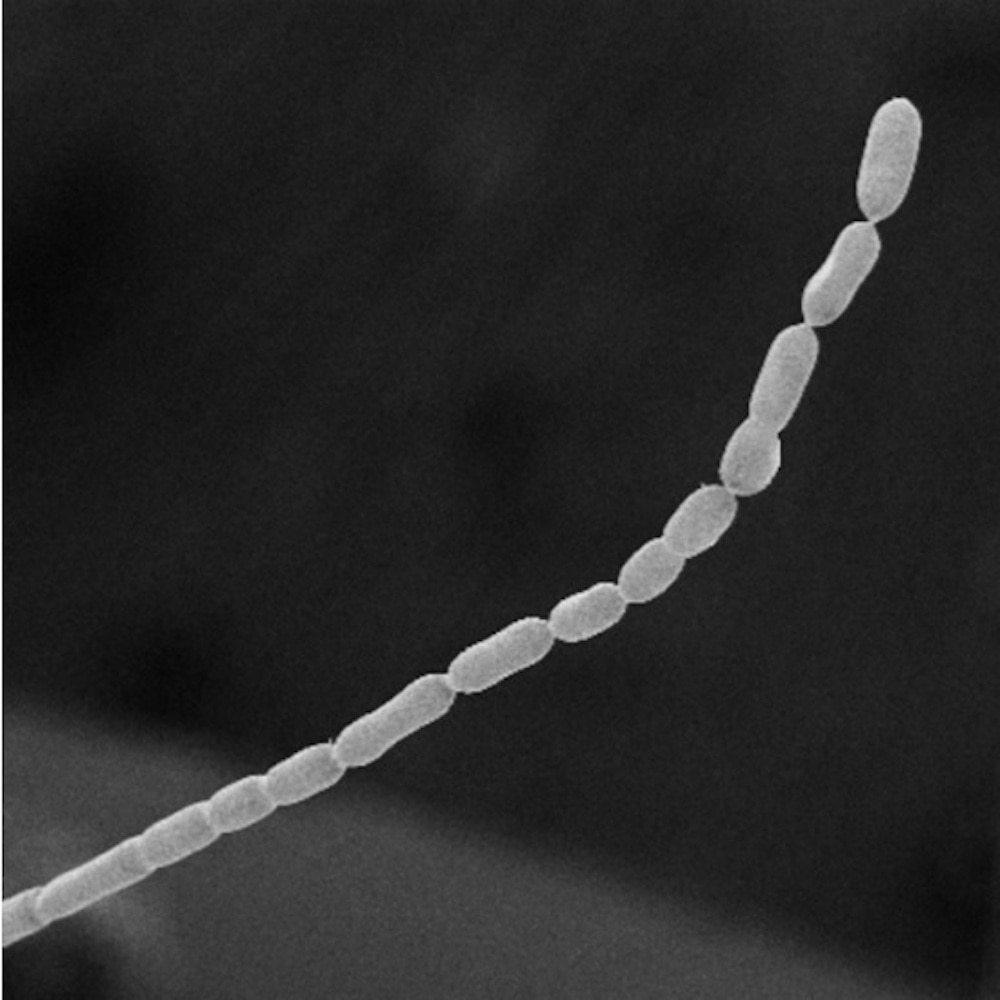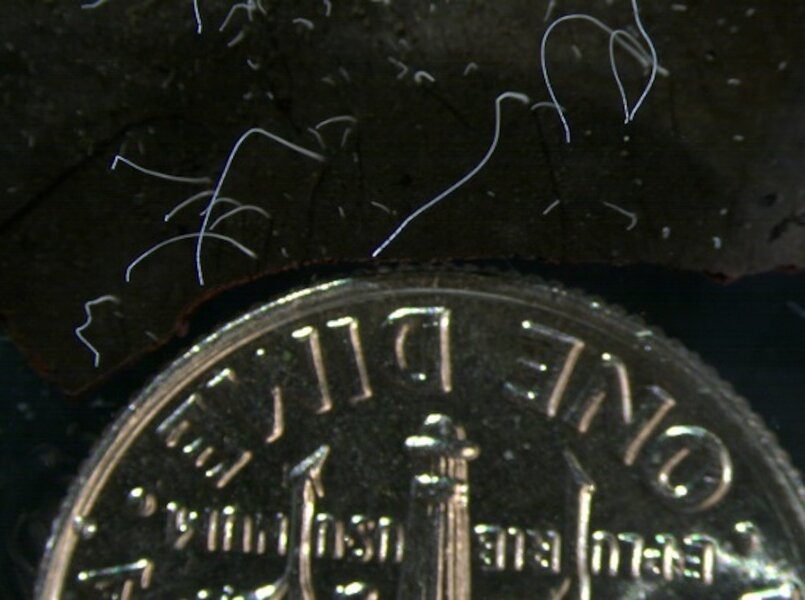Create a free profile to get unlimited access to exclusive videos, sweepstakes, and more!
Largest bacterium ever discovered can be seen with the naked eye
Nature will break any rule given half a chance.

Mega Shark versus Giant Octopus (now streaming on Peacock!) continues the time-honored tradition of pitting human beings against unexpectedly gigantic versions of everyday creatures. The shock, and the adventure, of those stories derives from subverting expectations about how life around us can behave and asking us to come to terms with the collapse of those expectations.
Despite our silver screen imaginings, we have yet to discover truly giant sharks or octopuses — at least not ones which are still alive — but that doesn’t mean we don’t sometimes stumble upon unexpectedly large creatures hiding in the seldomly trodden parts of the world. In fact, scientists have recently discovered one of the world’s smallest giants in the form of an incredibly large bacterium called Candidatus Thiomargarita magnifica.
Jean-Marie Volland and Tanja Woyke, from the Department of Energy Joint Genome Institute at the Lawrence Berkeley National Laboratory, were among the team of scientists who discovered and described a new species of bacteria which shatters all of our predictions about their size. The results of their study were published in the journal Science.
Despite being large enough to easily see with the naked eye, Ca. T. magnifica has until recently evaded observation and study by scientists. Indeed, it might be precisely because it is so large and doesn’t fit into our previous definitions that it was missed.
"We’ve expected bacteria to be in a certain size range, but there are outliers. Giant viruses were also overlooked because people thought they were bacteria," Woyke told SYFY WIRE. "When I think about microorganisms and even small macro-organisms, there’s such a tremendous diversity and such a diversity of ecosystems to search. There’s still so much we haven’t looked at. It is surprising finding such a large bacterial cell but maybe not too surprising."
The new species was discovered in the mangrove forests of Guadalupe, a French island in the Caribbean, in 2009. At first, scientists thought the white filaments growing on decaying leaves at the bottom of the water were a new kind of fungus or maybe a worm. However, when they were placed under a microscope, researchers didn’t see any of the trademark features they would expect from eukaryotic organisms. Instead, they found something which looked shockingly like a large bacterium.
Later, collaborators dug into the genome of the new species and confirmed that it was, in fact, a bacterium. Moreover, it wasn’t a chain of cells, but was just a single cell much larger than anyone expected to find.
The previous record holder for the largest bacterium is only a fraction of the size, coming in at approximately 0.18 millimeters. That’s still large enough to see with the naked eye, if you know to look for it, but it pales in comparison to the new reigning champion.
“The one we’re describing now is up to 20 millimeters, with an average size of 10 millimeters. When comparing average sizes, it’s about 50 times larger than the previous largest species,” Volland said.
It’s likely that scientists didn’t look for bacteria in this size range not just because they are larger than expected, but because they are actually larger than should be possible, based on our previous understanding. When bacteria are small, they produce energy at the membrane of the cell and that energy has to be distributed throughout the cytoplasm inside the bacteria’s body. As the size of a bacterium increases, its volume increases more quickly than the area of its cell wall (thanks to the square-cube law) which means there’s an upper limit to how large a bacteria should be able to grow. To solve for this, Ca. T. magnifica doesn’t restrict energy production to the external cell membrane. Instead, it produces energy throughout the cytoplasm by way of a whole bunch of distributed bioenergetic membranes.
Their size is only the beginning of what makes this new species exciting. When scientists began to really look closely at what they’d found, they saw that the insides of the bacterium were as surprising as its outside.
“As I’m looking at the microscopic observations, I’m of course excited about the gigantic size, but I’m also very curious about these small structures that I recognized inside the cells. There are small sacs that have a membrane with the DNA inside, contained and separated from the rest of the cell. That’s not something you expect to see in bacteria,” Volland said.
They named the sacs Pepins, and they are a membrane-bound organelle which is more characteristic of complex cells like eukaryotes. “Suddenly, it’s not only the largest bacteria ever, but also one of the most complex we’ve ever seen,” Volland said.
Luckily for us, it’s not the kind of bacteria we need to worry about. “No one has been infected so far,” Woyke said, somewhat jokingly. In fact, most bacteria are either neutral or beneficial with respect to humans, other life, and the environment. For their part, Ca. T. magnifica is more interested in sulfur than people or other animals.
“They live at the surface of the sediment in mangrove forests. It’s a very extreme environment because all the organic material settles in these quiet waters and becomes these dark, black, reduced sediments devoid of oxygen. It produces hydrogen sulfide, which is very toxic to most animals, but it can be used as a source of energy by some bacteria,” Volland said.
There, they live out their lives, sucking up sulfur and growing to enormous lengths, relatively speaking. There’s still a lot to learn about the species, like the specifics of their life cycle, but one thing is clear: We’re going to have to rewrite the textbooks on the forms which bacteria can take. While we’re at it, we might want to reconsider the way we look at other forms of life. There are probably some incredible discoveries waiting on the other sides our definitions.



























